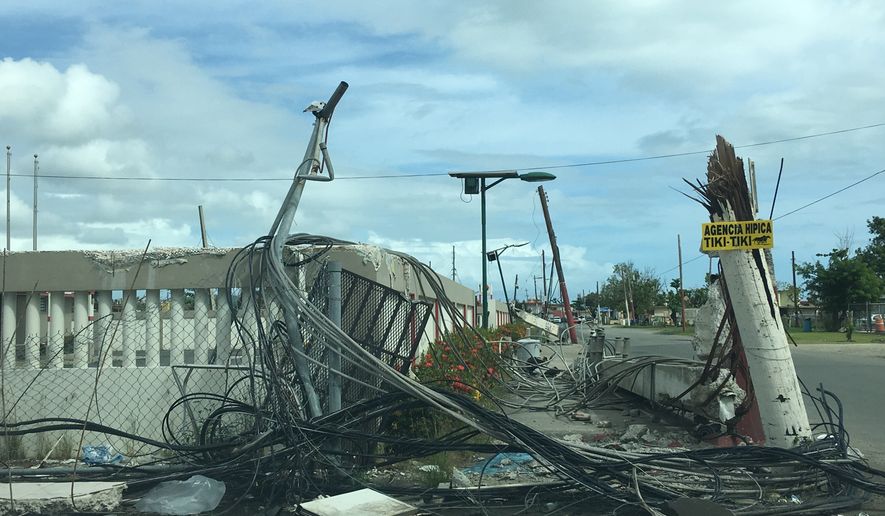SAN JUAN, Puerto Rico — Almost four months since Hurricane Maria leveled Puerto Rico, two realities have taken hold on the island.
For the neighborhoods in the capital city reconnected to electricity, residents hung Christmas lights outside their homes for the holidays.
But in the south, progress is slow. In Playa Punta Santiago, a small beach town on the coast where Maria first made landfall, the debris from whole structures — a school, gas station, homes — still litter the landscape.
Giant palm trees were uprooted and destroyed electrical poles canopy narrow roads.
Brig. Gen. Diana Holland, commander of the South Atlantic Division of the U.S. Army Corps of Engineers (USACE), told The Washington Times that everyone who arrived to the island after the storm understood the magnitude of the crisis and the urgency of response time.
“I can’t imagine how it could have gone any faster and having been here in the initial days after the storm, there was such a sense of emergency here, everybody understood that this was a crisis and that it would be a lot of work,” Gen. Holland said.
More than 800 members of the Corps are overseeing and working with contractors in rebuilding the island’s electrical grid, clearing debris and providing temporary roofing and emergency power.
B.J. Parkey, from the Tulsa District Corps of Engineers, was one of the first relief workers to arrive after the hurricane and oversees the emergency distribution of powerful generators — the kinds that fuel hospitals, dialysis centers, water treatment plants, police stations, fire houses or other critical-life saving industry.
More than 1,000 of those generators are still in use. For comparison, only about 45 generators were distributed in Florida after Hurricane Irma.
Standing at a staging area at the U.S. Army Garrison’s Fort Buchanan in San Juan, Mr. Parkey said when he arrived almost four days after the storm, there wasn’t even a leaf on a tree. He’s served in over a dozen disaster zones including hurricanes Rita and Katrina and Super Storm Sandy — but called the devastation on Puerto Rico “catastrophic.”
Yet he hesitates to quantify how relief work on the island has progressed.
“The improvement I’ve seen in San Juan has been a significant turnaround in the past 90 days for people’s lifestyles,” Mr. Parkey said. “Again, I really hate to quantify that, because there’s people out there who are going to disagree with me there are homes out there in this area that still don’t have power.”
Puerto Rico is an island of contradictions. There’s a mass of American commercialism — fast food chains, department stores, retail-pharmacy outlets, and more, cluttering almost every neighborhood.
But driving through San Juan, it’s difficult to assess what was damaged by the storm or what is a result of the U.S. territory’s 43 percent poverty rate.
There are communities with unkept roads, narrow streets and poor signage — these aren’t all a result of Maria. But then you see a refrigerator outside, an organized pile of debris waiting to be thrown out and a blue tarp covering a roof.
The blue roof is signature job of the USACE. Carlos Lopez of Bayamon, a municipality west of San Juan, is a local hire, contracted to help distribute the blue tarps with other members of the corps.
Before the hurricane he was looking for work, having graduated in May with a degree in biotechnology. He started working in October and has been so busy, he hasn’t looked at the news or read reports of Puerto Rico relief efforts. He works almost every day, most of the time for 12 or more hours.
“I just eat dinner and sleep,” Mr. Lopez said.
• Laura Kelly can be reached at lkelly@washingtontimes.com.




Please read our comment policy before commenting.